Aquatic Invertebrates
Media
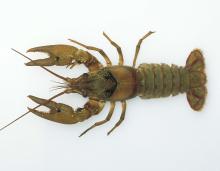
Species Types
Scientific Name
About 38 species in Missouri
Description
Crayfish are freshwater aquatic invertebrates that look a lot like small lobsters, to which they are related. There are about 38 species of crayfish in Missouri.
Media
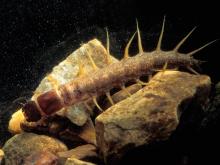
Species Types
Scientific Name
Chauliodes, Neohermes, and Nigronia spp. (in eastern US)
Description
Fishfly larvae look a lot like their cousins the hellgrammites, but they lack cottony or hairy gill tufts along the abdomen, and they have 2 short, fleshy tails at the hind tip.
Media
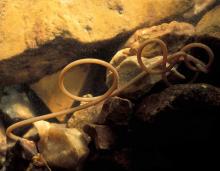
Species Types
Scientific Name
About 350 species scientifically described.
Description
Adult horsehair worms can be nearly 3 feet long and live in water. They are practically featureless, smooth, aquatic worms that writhe into knots and curls.
Media

Species Types
Scientific Name
Dugesia, Planaria, and other genera
Description
Unlike their parasitic cousins in the flatworm group, turbellarians, or planarians, are tiny carnivores or detritus-eaters that glide smoothly across submerged leaves and other objects.
Media
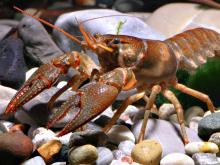
Species Types
Scientific Name
Faxonius quadruncus (formerly Orconectes quadruncus)
Description
The St. Francis River crayfish is rather small and dark brown, with blackish blotches or specks over the upper surfaces of the pincers, carapace, and abdomen. It is limited to the St. Francis River and its tributaries.
Media
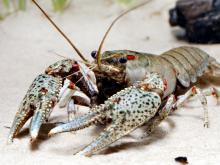
Species Types
Scientific Name
Faxonius palmeri (formerly Orconectes palmeri)
Description
The gray-speckled crayfish is gray with numerous greenish-black speckles and blotches. A pair of large blotches are present near the back of the head, and another pair occur where the carapace joins the abdomen. In Missouri, it is found only in the southeastern section.
Media
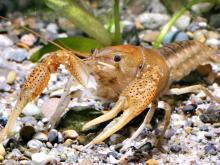
Species Types
Scientific Name
Procambarus acutus
Description
Adult White River crawfish are usually a deep burgundy red with a black V-shaped stripe on the abdomen. Juveniles are gray with dark spots scattered over the carapace. In Missouri, this species mostly occurs in the Bootheel and north along the Mississippi River.
Media

Species Types
Scientific Name
Procambarus clarkii
Description
Adult red swamp crawfish are dark red (nearly black on the carapace) and have a wedge-shaped black stripe on the abdomen. Juveniles are a uniform gray, sometimes overlain by dark wavy lines. In Missouri it lives in the Bootheel.
Media
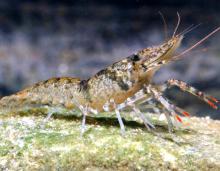
Species Types
Scientific Name
Faxonius lancifer (formerly Orconectes lancifer)
Description
The shrimp crayfish is medium-small, light reddish brown to gray, and thickly dusted with darker specks. Its noselike rostrum is unusually long, with the tip longer than the base, and the pincers are narrow and weak. It is found in the Bootheel.
Media
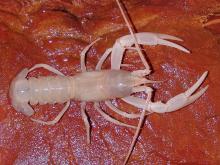
Species Types
Scientific Name
Orconectes stygocaneyi
Description
One of three species of cave crayfish in Missouri, the Caney Mountain cave crayfish is known from only one location. Like many other cave invertebrates, this species is whitish and is blind.
See Also
About Aquatic Invertebrates in Missouri
Missouri's streams, lakes, and other aquatic habitats hold thousands of kinds of invertebrates — worms, freshwater mussels, snails, crayfish, insects, and other animals without backbones. These creatures are vital links in the aquatic food chain, and their presence and numbers tell us a lot about water quality.





















